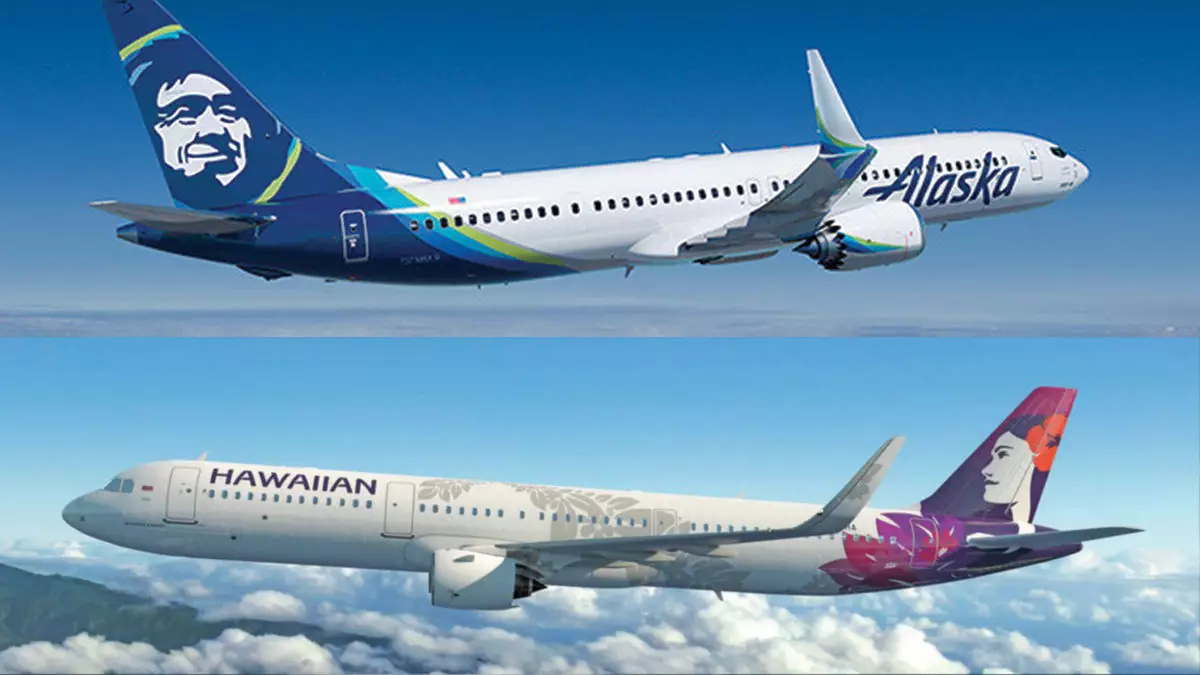In a significant shift within the aviation landscape, Alaska Airlines is poised to finalize its acquisition of Hawaiian Airlines for $1.9 billion, reflecting a crucial milestone in the industry’s relentless pursuit of consolidation and growth. Following conditional approval from the U.S. Department of Transportation (DOT), the merger has cleared critical legal and regulatory hurdles, including a non-challenge announcement from the Department of Justice. However, the integration of these two airlines will unfold under a series of stipulations designed to safeguard competition and consumer interests.
The DOT’s approval comes with conditions not imposed by the Justice Department, aiming to preserve flight availability and maintain service quality. The airlines must sustain or enhance service on routes where they currently dominate or serve alongside a limited number of competitors. Additionally, the interisland service within Hawaii must remain at existing levels. Such measures reflect the DOT’s commitment to preserving competitive dynamics, particularly in regions where consumer choice is already limited.
Protecting competitors is a crucial aspect of the DOT’s stipulations, as Alaska Airlines is mandated not to engage in practices that would hinder smaller airlines’ access to new facilities at Hawaiian’s Honolulu hub. This condition emphasizes the importance of maintaining a level playing field for all carriers, ensuring that competition remains robust even as larger players expand their reach.
The consumer-centric conditions applied to the merger also merit attention. As part of the agreement, Hawaiian Airlines will have to adopt service policies that mirror Alaska Airlines’ commitment to family-friendly travel. This includes guaranteeing adjacent seating for children under 13 when traveling with an adult, thus catering to the needs of families and enhancing overall passenger experience. Furthermore, the requirement for Hawaiian to offer travel credits or miles for flights delayed by three hours or more indicates a shift toward greater accountability in customer service—a pivotal expectation in today’s air travel sector.
Beyond these measures, military personnel are set to benefit from reduced travel costs and waived fees for alterations in travel plans due to military directives. This acknowledgment underscores a vital social responsibility from the airline industry towards veterans and active duty service members, ensuring their travel needs are met with consideration and respect.
A significant area of focus in the merger negotiation is the fate of the loyalty programs from both airlines. Alaska Airlines has committed to maintaining the value of HawaiianMiles during the transition to the Mileage Plan, ensuring that current HawaiianMiles holders do not lose out on their accrued benefits. This crucial step not only fosters consumer trust but also promotes a seamless integration of frequent flyer programs, an often complex element in mergers.
The establishment of a unified loyalty program post-merger, with a conversion rate of 1-to-1 for miles, will need careful implementation to ensure that the interests of both sets of loyal customers are adequately met. Efforts must be made to maintain the integrity and perception of both brands as they combine under a singular operating structure while preserving their unique identities.
As the merger materializes, leadership structures will inevitably shift. Alaska Airlines CEO Ben Minicucci is set to retain his role post-merger, while Joe Sprague, the current regional president for Alaska in Hawaii, will assume the CEO role at Hawaiian Airlines. This leadership transition reflects a desire to blend experience with regional expertise, positioning the merged entity for success in the highly competitive aviation market.
The success of this merger will rest significantly on operational execution and the management of newly combined resources. Balancing competitive dynamics while adhering to the stipulations laid out by regulatory bodies will require strategic foresight and commitment to customer satisfaction.
Alaska Airlines’ acquisition of Hawaiian Airlines represents an ambitious endeavor that could reshape both companies and the broader airline industry. The path forward, laden with regulatory conditions and consumer protections, signals a coordinated approach to integrating operations without sacrificing competition or customer trust. As the two airlines prepare to take off under a single certificate while retaining their distinct brands, the industry watches closely, eager to see how this merger unfolds in the ever-evolving landscape of air travel.


Leave a Reply